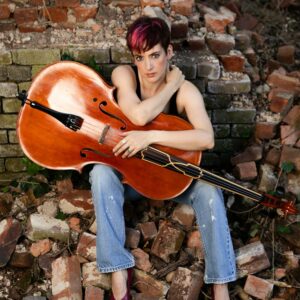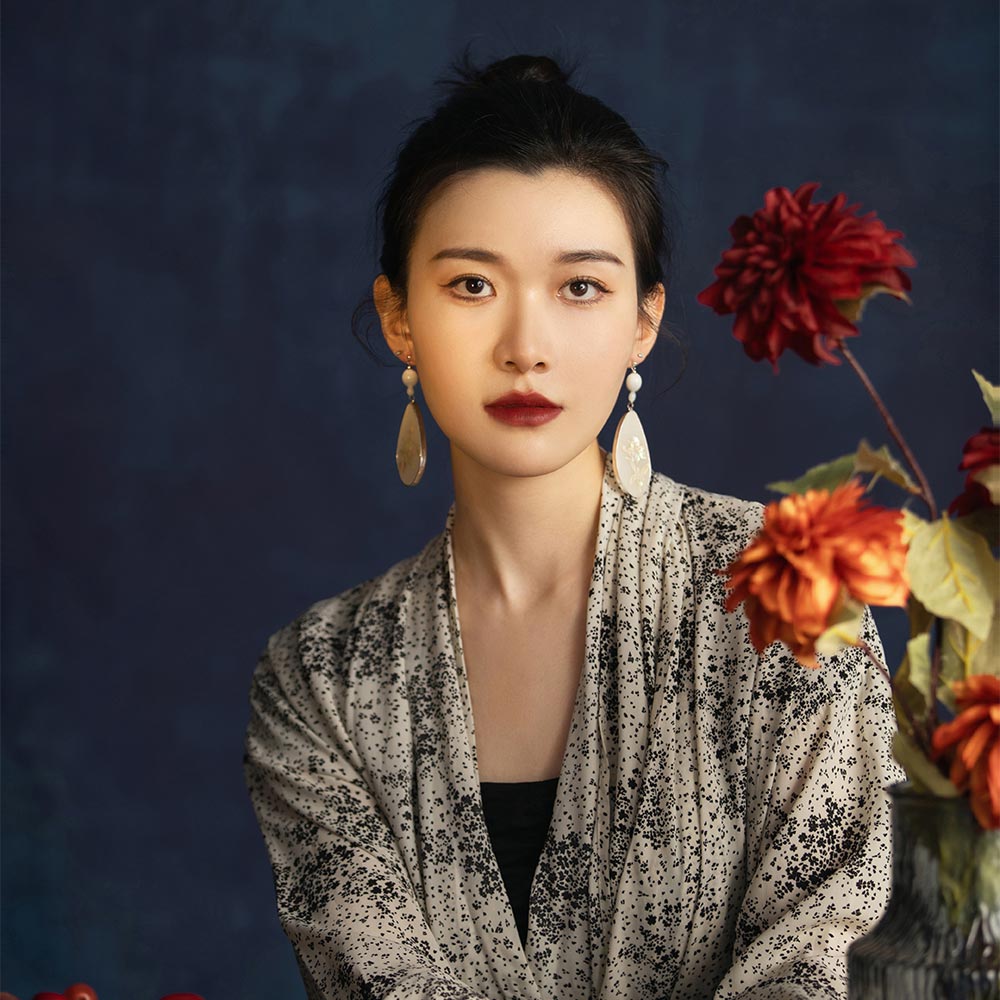American Woman
Mary Howe composer
Amy Beach composer
Margaret Bonds composer
Helen Crane composer
Dorothy Rudd Moore composer
Florence Price composer
Juliana Soltis cello
Ruoting Li piano
The cello-piano duo is justly hailed for its tremendous expressiveness. Cellist Juliana Soltis and pianist Ruoting Li remarkably demonstrate this setup’s emotive power on AMERICAN WOMAN while championing a noble cause — highlighting underrepresented women composers.
Featuring works by Mary Howe, Amy Beach, Margaret Bonds, Helen Crane, Dorothy Rudd Moore, and Florence Price, AMERICAN WOMAN sheds light on a treasure trove of rarely heard gems of cello-piano literature. The general tone is sweeping, romantic, expressive, at times fierce and energetic, then again tender and delicate. Soltis and Li show extraordinary ability not only in bringing out the unique style of each composer, but also in uniting them all in a great artistic effort.
Listen
Stream/Buy
Choose your platform
Track Listing & Credits
| # | Title | Composer | Performer | |
|---|---|---|---|---|
| 01 | Ballade Fantasque | Mary Howe | Juliana Soltis, cello; Ruoting Li, piano | 10:05 |
| 02 | Three Pieces Op. 40: La Captive | Amy Beach | Juliana Soltis, cello; Ruoting Li, piano | 3:15 |
| 03 | Three Pieces Op. 40: Berceuse | Amy Beach | Juliana Soltis, cello; Ruoting Li, piano | 3:32 |
| 04 | Three Pieces Op. 40: Mazurka | Amy Beach | Juliana Soltis, cello; Ruoting Li, piano | 3:06 |
| 05 | Troubled Water | Margaret Bonds | Juliana Soltis, cello; Ruoting Li, piano | 6:42 |
| 06 | Six Idylls for Cello and Piano, Op. 51: No. 1: Andante | Helen Crane | Juliana Soltis, cello; Ruoting Li, piano | 2:45 |
| 07 | Six Idylls for Cello and Piano, Op. 51: No. 2: Andante con moto | Helen Crane | Juliana Soltis, cello; Ruoting Li, piano | 2:18 |
| 08 | Six Idylls for Cello and Piano, Op. 51: No. 3: Allegro moderato dolce e espressivo | Helen Crane | Juliana Soltis, cello; Ruoting Li, piano | 2:00 |
| 09 | Six Idylls for Cello and Piano, Op. 51: No. 4: Quasi adagio | Helen Crane | Juliana Soltis, cello; Ruoting Li, piano | 2:41 |
| 10 | Six Idylls for Cello and Piano, Op. 51: No. 5: Allegretto | Helen Crane | Juliana Soltis, cello; Ruoting Li, piano | 1:14 |
| 11 | Six Idylls for Cello and Piano, Op. 51: No. 6: Andante quasi allegretto con tenerezza | Helen Crane | Juliana Soltis, cello; Ruoting Li, piano | 3:09 |
| 12 | Dirge and Deliverance | Dorothy Rudd Moore | Juliana Soltis, cello; Ruoting Li, piano | 16:00 |
| 13 | Adoration | Florence Price | Juliana Soltis, cello; Ruoting Li, piano | 2:49 |
Recorded September 6-7, October 18-20, November 13 & 16, 2023 at Patrych Sound Studios in The Bronx, New York NY
Recording Session Producer & Engineer Joseph Patrych
Editing, Mixing & Mastering Peter Atkinson
Photos of Juliana Soltis by Sarah Kane Photography
Photo of Dorothy Rudd Moore by Bert Andrews, from the American Composers Alliance (ACA) Archives
Executive Producer Bob Lord
VP of A&R Brandon MacNeil
A&R Danielle Sullivan
VP of Production Jan Košulič
Audio Director Lucas Paquette
VP, Design & Marketing Brett Picknell
Art Director Ryan Harrison
Design Edward A. Fleming
Publicity Chelsea Kornago
Digital Marketing Manager Brett Iannucci
Artist Information

Juliana Soltis
Raised amidst the diverse musical traditions of southern Appalachia, cellist Juliana Soltis inspires audiences the world over with “exquisite, heart-rending” (Early Music America) performances that are redefining classical music. A “true virtuoso” (Classical Music), Soltis delights in connecting listeners with the forgotten stories of classical music.

Ruoting Li
Chinese pianist Ruoting Li is an artist of wide-ranging vision, known for her “eloquent, musical” (Fanfare Magazine) interpretations of contemporary music, particularly that of women composers. With a burgeoning international career as both a solo pianist and chamber musician, as well as several albums to her name, Li serves as the Resident Pianist with the Boston Festival Orchestra. She also tours with the genre-defying trio, TAKE3, participating in their “bold, aggressive” (LA Times) performances as well as their outreach events to local schools around the United States.
Notes
Videos
A behind the scenes look at the works from AMERICAN WOMAN with cellist Juliana Soltis.
An Inside Look: The Creation of AMERICAN WOMAN
Beyond the Score: Mary Howe’s Ballade Fantasque
Beyond the Score: Amy Beach’s Three Pieces Op. 40
Beyond the Score: Margaret Bonds’ Troubled Water
Beyond the Score: Helen Crane’s Six Idylls for Cello and Piano, Op. 51
Beyond the Score: Dorothy Rudd Moore’s Dirge and Deliverance
Beyond the Score: Florence Price’s Adoration
